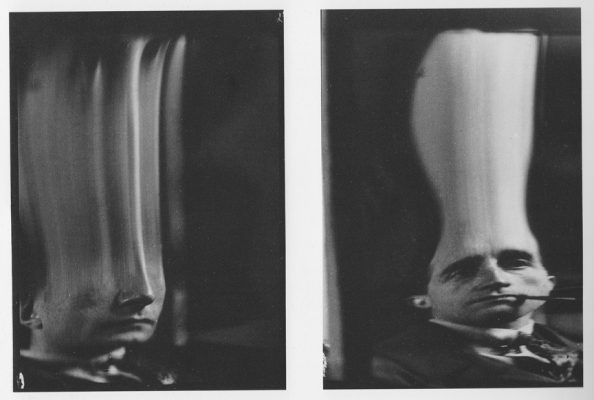Early in Judith Schalansky’s An Inventory of Losses, the narrator describes the way an ancient form of writing survived oblivion. The soft clay tablets on which the proto-ancient Greek script known as Linear B were written, detailing the income and expenditure of the Palace of Knossos, were hardened by a fire that destroyed nearly everything else around them, including most of the palace itself. If not for the fire, the survival of that early practice of record-keeping by inscription is doubtful. Such an irony seems central to Schalansky’s work. Her new book is about what we have lost, but also what remains: in her case, not through fire but through imagination.
Translated from the German by Jackie Smith, An Inventory of Losses is an attempt to confront what has been destroyed, either by time or human hand. How can writing, it asks us, help us remember or mourn the inevitable destruction of things? In this series of prose pieces that mix essay, memoir and fiction, Schalansky describes a variety of objects that have disappeared from the world. Her sense of what an object is – maybe ‘thing’ is a better word – is expansive, including animals, films, and buildings. Each piece begins with a factual description of the item, and the accompanying text expands on it either by reconstructing the world in which the thing existed or sometimes imagining a scene that somehow resonates with it in a less direct way. Whether she is describing a particular breed of extinct tiger, the lost poetry manuscripts of Sappho, or monumental buildings from Schalansky’s own East Berlin childhood, her book is part Wunderkammer, part memento mori.
The book calls itself an ‘inventory,’ and although the term is wonderfully evocative, it is somehow limiting to what An Inventory of Losses actually is, the title being another example of Schalansky’s irony. According to the Society of American Archives, an inventory is, ‘A list of things, or a finding aid that includes, at a minimum, a list of the series in a collection.’ There are other works of literature that resemble this more closely than hers. Sir Thomas Browne’s Musaeum Clausum, published in 1684, comes to mind. It lists twenty books, thirty-two paintings, and twenty-five other things ‘scarce or never seen by any man now living,’ including such items as ‘the Skin of a Snake bred out of the Spinal Marrow of a Man.’ Musaeum Clausum is a list of things so fantastical that their mere description elevates the inventory to a work of imaginative literature. An Inventory of Losses instead describes each object and then transforms it through a work of prose. The fantasy here is less in the things themselves, more in the way in which they are conjured through accompanying text.
An Inventory of Losses is both a continuation and a departure for Schalansky. Until now she was probably best known in the English-language world for Atlas of Remote Islands: Fifty Islands I Have Never Set Foot on and Never Will, translated by Christine Lo. That earlier book was an atlas of the world’s most remote islands, with factual descriptions of each place. A child growing up in East Germany, Schalansky was unable to travel, and atlases gave her a way of imagining the world. ‘I probably loved atlases so much because the lines, the colours and the names replaced the real places that I could not visit.’ At the time of its publication, Atlas fit into the trend for Leanne Shapton-like literary works that mixed prose with illustration. What distinguished Atlas, however, was the way in which the form seemed to speak to the sense of loss that Schalansky was attempting to fill: the world outside the borders of the GDR. In Inventory, it has extended beyond borders of both country and epoch.
Loss, for her, is tethered to libraries, reference books, and archives, where traces of otherwise forgotten things are recorded and safeguarded. Such institutions are a signature element of Schalansky’s work as both source and subject. Her archival obsessions also reminded me of an anecdote about Gustave Flaubert. According to Maël Renouard, when Flaubert was writing Sentimental Education, he requested an ‘extremely detailed report on the modes of transportation and communication that existed at the time of the 1848 revolution {…} he particularly wanted to know how one could return from Fontainebleu to Paris at the moment when the riots were raging. It’s said,’ Renouard continues, ‘that this whole mountain of information gave birth to a single sentence.’ The same geographic scale of documentary research seems to animate An Inventory of Losses. The story of the Caspian tiger, for example, describes a gladiatorial battle involving one of the animals. While reading, I paused to wonder how much research she must have done to get the account of those area fights in ancient Rome right.
I was also taken by how the encounter between the object and its accompanying text is sometimes more poetic than literal, though just as researched, reminiscent of American essayists Eliot Weinberger or Guy Davenport. In another chapter, Schalansky describes a lost painting by the German artist Caspar David Friedrich of the harbour of his hometown, Greifswald. The item is accompanied by a description of a hike through the marshlands and delta surrounding the river Ryck, which runs through Greifswald. The description of this walk then vividly pictures the landscape of Friedrich’s painting, the ambience of the place, but not the lost picture. It conjures the mood that may have been similar to what the painting achieved, but we will never know. ‘The great blanket of cloud,’ she writes, ‘spread out hangs low and heavy over me. Only in the distance are there breaks in the cloud, giving a glimpse of a streak of pale powdered pink.’ Those two sentences have a painterly compression, almost as if she were describing a picture. It doubles, as all of the prose from the section does, as both a description of a real place and an attempt to reimagine the lost painting. The picture she has in mind has, of course, vanished – hence we have no idea if what her words describe bear any resemblance to the destroyed artwork. Hers is a fascinating form of ekphrasis, the practice of describing an artwork in literature. In this case, no artwork, either real or imaginary, is described but her description of a specific landscape creates a mood, which thus suggests what effect the lost depiction may have also given. It’s an uncanny strategy. It leaves us with a sense of what we could have been looking at, though we will never be sure. Each piece begins where the object vanishes, so we’re left with the way that the lost object continues to resonate long past its disappearance.
‘Naturally,’ she writes in the preface, ‘we can only mourn what is absent or missing if some vestige of it, some whisper, perhaps little more than a rumour, a semi-obliterate trace, an echo of an echo has found its way to us.’ Mourning and loss here are never far from destruction: ‘Only now,’ she further remarks, ‘having almost finished work on this book in which the diverse phenomena of decomposition and destruction play a central role have I realised that this is just one of myriad ways of dealing with death, one that is fundamentally no more crude or caring than that of the Callatiae tribe whose custom, as Herodotus attests, was to eat their deceased parents, and who were horrified when they learned of the Greeks’ tradition of cremating theirs.’
But perhaps ironically, the effect of the book is the opposite. Instead of a requiem for what is gone, Schalansky sings a dirge for what remains. She may be melancholic, even teutonically fatalistic, yet in her hands there is something almost pragmatic about this unflinching gaze on the vanished. Confronting what has disappeared nudges us to examine what is happening around us, right now. Even if all these things are gone, and literature cannot save them, our ability to think of them, in any case – to imagine them – allows us to contemplate what we are currently losing, and what might further disappear. The book then serves as a reflection for what we now witness around us, the likes of which we haven’t seen since the First World War: the loss of languages, cultures, climates, ways of living – in a sense, a world.
There is hope, though – but not for us, to quote Kafka. An Inventory of Losses reminds us how we may use imagination to stave off the eventual darkening, even if it is only at the end of a paper-trail deep in libraries or archives. It’s meagre consolation, a madness really. And yet An Inventory of Losses hints that as things disappear others somehow persist. The act of reimagining what is lost is like firing clay tablets.




